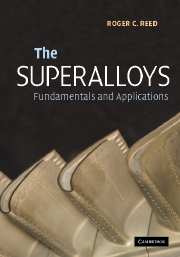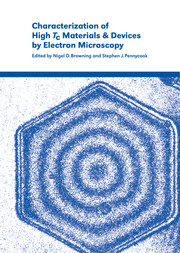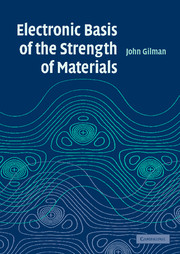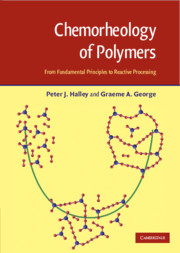Refine search
Actions for selected content:
106102 results in Materials Science
Reticular Chemistry and Metal-Organic Frameworks for Clean Energy
-
- Journal:
- MRS Bulletin / Volume 34 / Issue 9 / September 2009
- Published online by Cambridge University Press:
- 31 January 2011, pp. 682-690
- Print publication:
- September 2009
-
- Article
- Export citation
Coarsening of polyhedral grains in a liquid matrix
-
- Journal:
- Journal of Materials Research / Volume 24 / Issue 9 / September 2009
- Published online by Cambridge University Press:
- 31 January 2011, pp. 2949-2959
- Print publication:
- September 2009
-
- Article
- Export citation
Optical Transistor Developed with Single Molecule
-
- Journal:
- MRS Bulletin / Volume 34 / Issue 9 / September 2009
- Published online by Cambridge University Press:
- 31 January 2011, pp. 628-629
- Print publication:
- September 2009
-
- Article
-
- You have access
- Export citation
Growth of aligned multiwalled carbon nanotubes on bulk copper substrates by chemical vapor deposition
-
- Journal:
- Journal of Materials Research / Volume 24 / Issue 9 / September 2009
- Published online by Cambridge University Press:
- 23 February 2011, pp. 2813-2820
- Print publication:
- September 2009
-
- Article
- Export citation
Mechanical Stress Leads to Self-Sensing in Solid Polymers
-
- Journal:
- MRS Bulletin / Volume 34 / Issue 9 / September 2009
- Published online by Cambridge University Press:
- 31 January 2011, p. 629
- Print publication:
- September 2009
-
- Article
-
- You have access
- Export citation
Mechanochemical synthesis of a Mg-Li-Al-H complex hydride
-
- Journal:
- Journal of Materials Research / Volume 24 / Issue 9 / September 2009
- Published online by Cambridge University Press:
- 31 January 2011, pp. 2880-2885
- Print publication:
- September 2009
-
- Article
- Export citation
Piezomagnetoelastic Device Harvests Vibrational Energy
-
- Journal:
- MRS Bulletin / Volume 34 / Issue 9 / September 2009
- Published online by Cambridge University Press:
- 31 January 2011, p. 627
- Print publication:
- September 2009
-
- Article
-
- You have access
- Export citation
Surface-Modified Mesoporous Silica Nanoparticles Serve as Drug Carrier System
-
- Journal:
- MRS Bulletin / Volume 34 / Issue 9 / September 2009
- Published online by Cambridge University Press:
- 31 January 2011, p. 628
- Print publication:
- September 2009
-
- Article
-
- You have access
- Export citation
Formation and bioactivation of Zr-Al-Co bulk metallic glasses
-
- Journal:
- Journal of Materials Research / Volume 24 / Issue 9 / September 2009
- Published online by Cambridge University Press:
- 31 January 2011, pp. 2941-2948
- Print publication:
- September 2009
-
- Article
- Export citation
Improved wettability of Sn-based solder over the Cu60Zr30Ti10 bulk metallic glass surface
-
- Journal:
- Journal of Materials Research / Volume 24 / Issue 9 / September 2009
- Published online by Cambridge University Press:
- 31 January 2011, pp. 2931-2934
- Print publication:
- September 2009
-
- Article
- Export citation
Fluids in Small Confined Spaces Stirred with Self-Assembled Chains of Iron Beads
-
- Journal:
- MRS Bulletin / Volume 34 / Issue 9 / September 2009
- Published online by Cambridge University Press:
- 31 January 2011, p. 627
- Print publication:
- September 2009
-
- Article
-
- You have access
- Export citation
Measuring the elastic modulus and residual stress of freestanding thin films using nanoindentation techniques
-
- Journal:
- Journal of Materials Research / Volume 24 / Issue 9 / September 2009
- Published online by Cambridge University Press:
- 31 January 2011, pp. 2974-2985
- Print publication:
- September 2009
-
- Article
- Export citation
Thermal explosion reaction in the Ti–B4C system in air
-
- Journal:
- Journal of Materials Research / Volume 24 / Issue 9 / September 2009
- Published online by Cambridge University Press:
- 31 January 2011, pp. 3003-3006
- Print publication:
- September 2009
-
- Article
- Export citation

The Superalloys
- Fundamentals and Applications
-
- Published online:
- 01 September 2009
- Print publication:
- 07 September 2006

Characterization of High Tc Materials and Devices by Electron Microscopy
-
- Published online:
- 21 August 2009
- Print publication:
- 06 July 2000

Electronic Basis of the Strength of Materials
-
- Published online:
- 14 August 2009
- Print publication:
- 20 March 2003

Chemorheology of Polymers
- From Fundamental Principles to Reactive Processing
-
- Published online:
- 14 August 2009
- Print publication:
- 28 May 2009
4 - Rubber formation
-
- Book:
- Reinforcement of Polymer Nano-Composites
- Published online:
- 06 January 2010
- Print publication:
- 13 August 2009, pp 31-39
-
- Chapter
- Export citation
6 - Polymers of larger connectivity: branched polymers and polymeric fractals
-
- Book:
- Reinforcement of Polymer Nano-Composites
- Published online:
- 06 January 2010
- Print publication:
- 13 August 2009, pp 64-74
-
- Chapter
- Export citation
3 - Many-chain systems: melts and screening
-
- Book:
- Reinforcement of Polymer Nano-Composites
- Published online:
- 06 January 2010
- Print publication:
- 13 August 2009, pp 19-30
-
- Chapter
- Export citation
